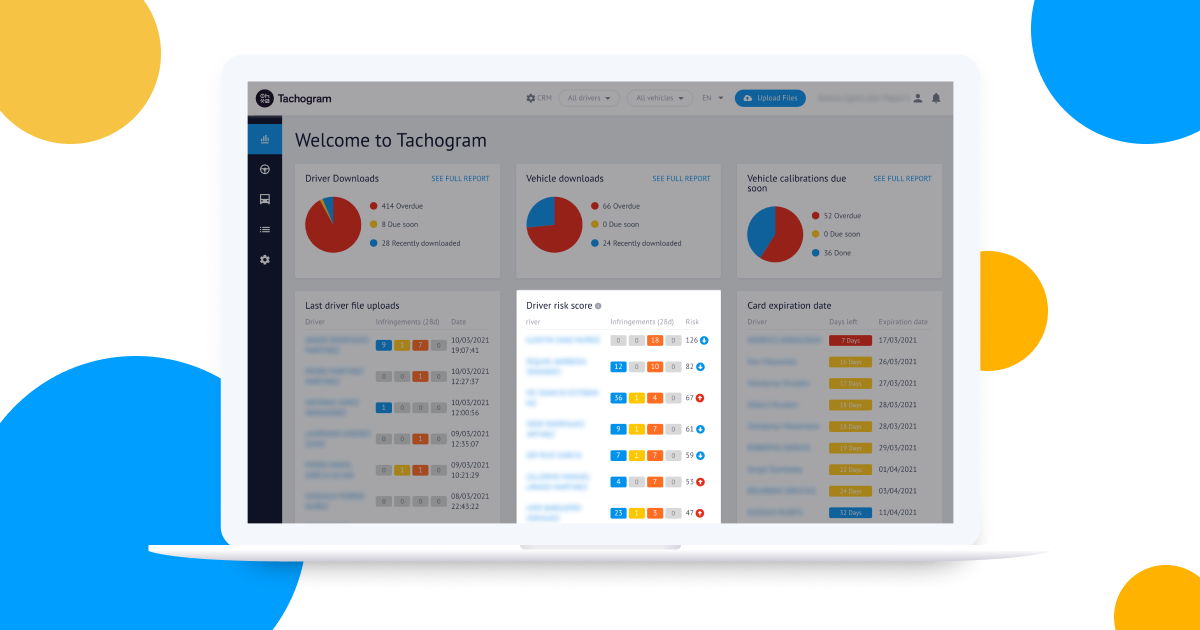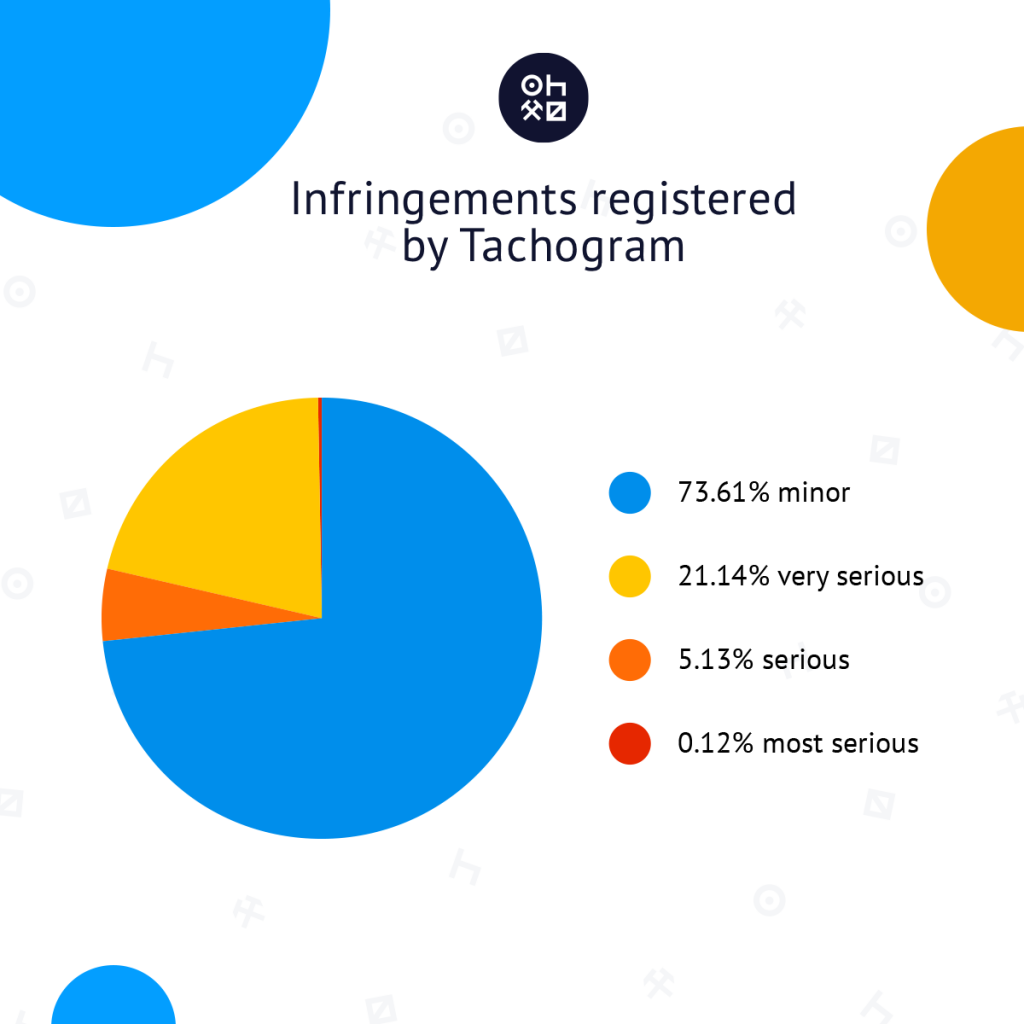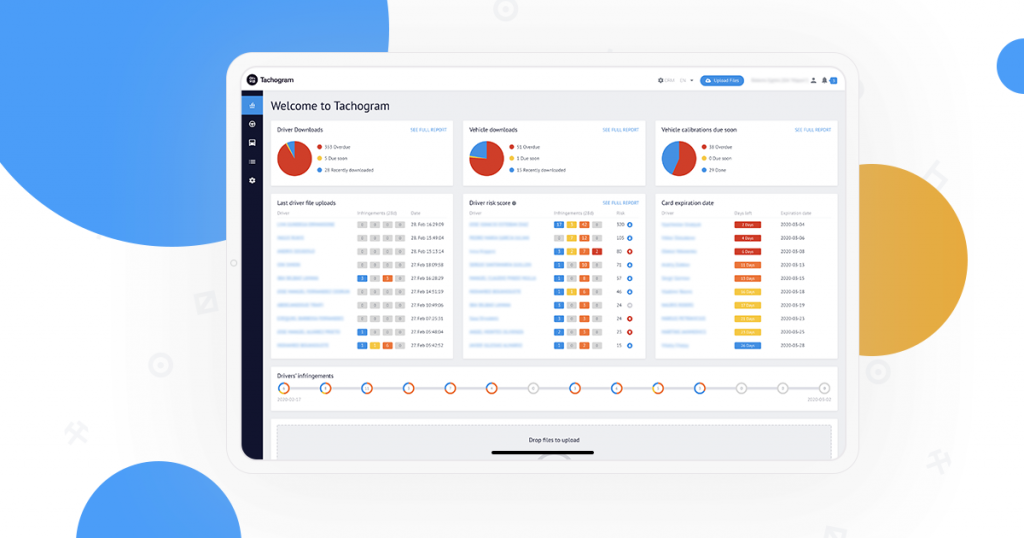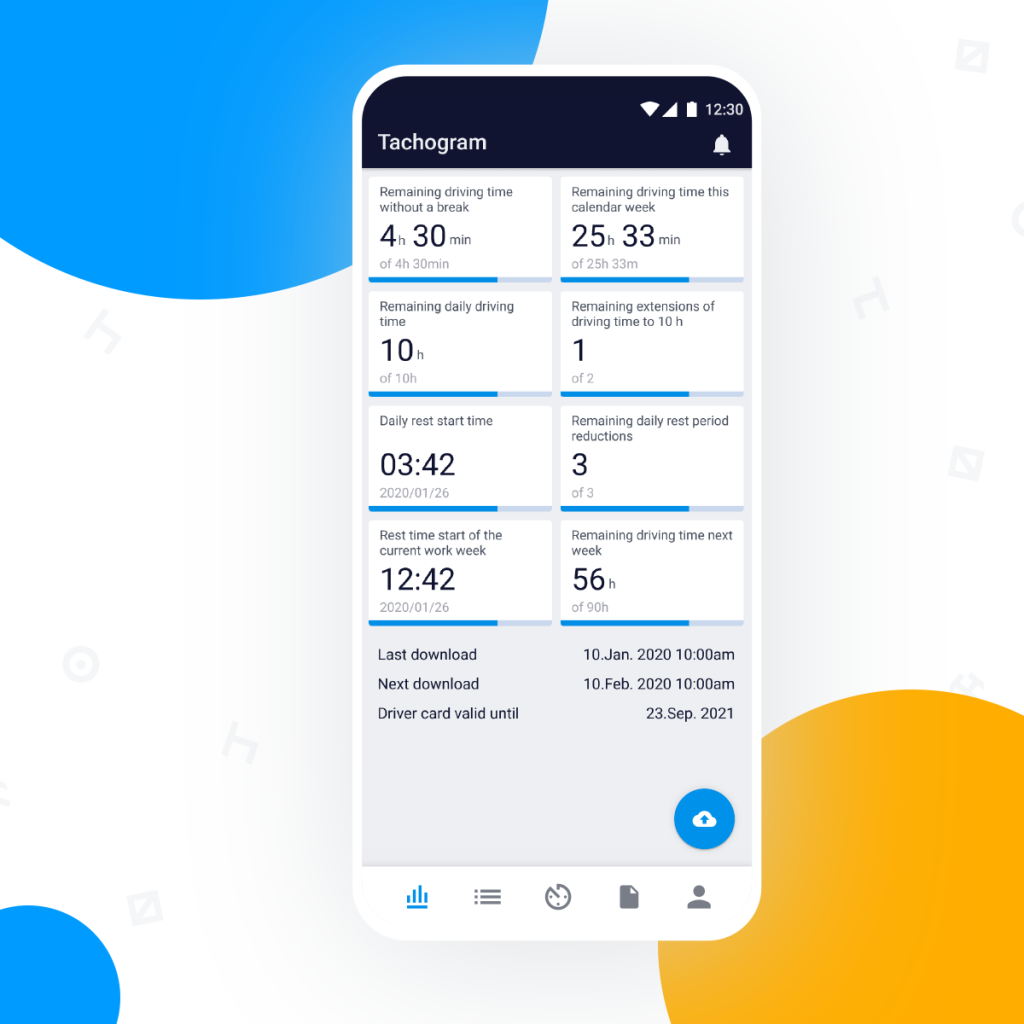
Risk Rating Report to Help Companies Manage Driver Work and Rest Times
Driving time, breaks and rest period times are strictly regulated for commercial drivers within the European Union to protect drivers themselves as well as other road users. This regulation (EC 561/2006) is implemented via regular tachograph checks and is part of the reason why fatalities of lorry drivers have dropped by 34%, heavy goods drivers by 47% and bus and coach drivers by 53% from 2008 to 2018 within the EU according to European Road Safety Observatory.
While it’s definitely great that the roads are becoming a safer place for everyone, the legislation also means that, in case any infringements are detected, both the driver and the company may face sizeable fines. In some countries, serious violations may also be punished by up to two years in prison.
Differences in Violations and Fines
Generally, the fines vary quite a lot from country to country. Violation types are also differentiated in four categories: minor, serious, very serious or most serious. It also differs whether the fines are or aren’t accumulative, meaning that in some countries, if a driver is caught violating multiple sections of the regulation at once, only the most serious offence would be punished while in others all of them would amount to one larger fine.
For example, in France, the largest possible fine is 30 000 euros, however, as in this country there’s no ceiling for the fine amount, it’s theoretically possible to accumulate even more. Or as in the case of one Belgian driver caught violating the regulation in France, many smaller and larger infringements can amount to a whopping 11 700 euro fine and 19 hours of waiting to get back on the road while the company scrambles to meet the requested payment. However, Tachogram statistics show that predictably most violations are minor ones and could be easily avoided.
The problem is that while the regulation is detailed and thorough, it’s also rather difficult to understand to most people and because of its volume - difficult to remember. That’s why transportation and logistics providers are forced to come up with solutions for effectively instructing their drivers and managers about the nuances of the regulation to avoid losing valuable time and money on paying fines.

*Data from infringements registered by the Tachogram system from February 2019 to February 2020. Luckily, there are ways to simplify the process of dealing with the regulation for both drivers and managers. One solution is Tachogram - a system designed by the digital solution development specialists for the logistics industry at Mapon specifically to address this issue. While it offers a variety of functions to tackle infringements committed by drivers and the subsequent fines, perhaps the most useful feature for managers is the Driver risk rating report, which allows managers to see all of the infringements committed by their drivers at a glance.

What’s more, the violations are automatically sorted by their seriousness and every driver has a risk rating assigned to them based on the amount and the seriousness of the infringements they’ve committed. Drivers are then sorted by their risk rating from highest to lowest so the manager can easily identify any problems as well as monitor the risk rating trends over time and take the necessary actions. Additionally, the manager can also see each and every infringement committed by drivers along with a short description explaining what has happened. This information can be accessed by opening the full report by either pressing the See full report button in the Dashboard or from the Reports tab. To make the system more transparent and help the drivers improve, drivers can also access their personal tachograph file data and keep track of their work and rest times via Tachogram mobile app to stay compliant with the regulation while on the go.

By taking advantage of this digital solution, many companies have already changed the way they approach storing, managing and analysing their driver tachograph data in order to comply with the work and rest time regulation, including such industry giants as Kreiss. If you’re wondering whether such a solution would fit the needs of your business, there’s a 14-day trial period available so you can make up your mind without spending a penny, cent or any other unit of currency. So wonder no more and simply try it out!